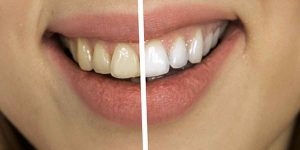Facts: It is known that 60-90 percent of kids suffer from dental decay.
Fluoride is a critical component in toothpaste and other dental hygiene products. It is a form of salt that occurs naturally in the soil, water, plants, and some foods. The salt is often synthesized before using it in dental care products.
Fluoride has several benefits when it comes to dental hygiene. It helps shield the teeth from decay caused by the interaction of bacteria and food particles in the mouth. It does this by stopping the acidic process that causes dental erosion.
Fluoride also bonds with the tooth enamel, rebuilds it and makes it resistant to further decay.
Dental decay causes irreversible damage to the hard tissues of the tooth. The extent of decay varies from person to person, and detection can be done through a physical dental exam or x-rays.
The use of fluoride to prevent decay has been ongoing for several decays. This is achieved through various methods, including:
Topical Application
Patients use topical medicine to stop the demineralization of teeth. Topically applied fluoride strengthens the tooth enamel, making it more resistant to bacteria and acid produced in the mouth.
This form of therapy comes in the form of toothpaste, gel, mouthwash or varnish. Most of the application is made at home, while some occur at a dental clinic.
A standard toothpaste contains about 132 milligrams of fluoride. Fluoride varnish contains about 0.5mg. Although these topical applications are essential for decay prevention, they may not be ideal for children who can swallow them and suffer from stomachache.
Dental Clinic Fluoride Therapy
This happens in a dental facility. Your dental specialist uses prescribed fluoride gels and varnish to treat any existing decay. Gels and varnish are considered more effective because of their ease of application.
Varnish is often applied to the teeth using a brush. It develops into a film once it gets in contact with saliva. As it solidifies, it remains attached to the teeth until it gets removed by brushing. Varnish is commonly used by professional dental cleaners to maintain healthy enamel, preventing decay.
Fluoride varnishes are common in patients that suffer from tooth sensitivity as a result of receding gums. The dentist applies varnish on the exposed roots to alleviate the sensitivity.
Fluoride Tablets and Drops
These are used by individuals who need to increase the amount of fluoride they consume. Fluoride tablets and drops are often recommended by dentists, and you should be careful that you do not take too much, as this can result in some problems.
Fluoride tablets do not replace dental care procedures, including brushing and flossing.
Drinking Water
You can also purchase bottled water that contains fluoride. Some purification systems eliminate fluoride from the water when purifying it. Before buying the water, be sure to check the amount of fluoride it contains.
Research indicates that introducing fluoride into drinking water reduces the rate of dental decay significantly. Once your children attain the age of six, your dentist will start introducing appropriate fluoride products into their dental routine. These may include fluoride-based sealants and toothpaste.
Floridization of water supply ensures that people get just enough fluoride to eliminate decay. The process involved infusing drinking water with the right amounts of natural fluoride. Research shows that the fluoride contained in natural water has the potential of diminishing decay by approximately 35 percent.
Effectiveness of Fluoride
Besides brushing and flossing, fluoride is also an effective method of maintaining proper dental hygiene. Although it is considered safe, large amounts of it can be harmful to your health. Talk to your dentist for more guidance on this.
Fluoride is especially vital for you if you always consume huge amounts of sugars and carbohydrates, wear braces, or have a history of decay. Generally, fluoride has two methods of action – it can be ingested or incorporated directly to the enamel.
Fluoride is mostly available in salt solutions that can only get activated in water or saliva. Sodium fluoride is common in toothpaste since it has more shelf-life and gets easily flavored.
In Closing
Although most people assume that the amount of fluoride they get from water and toothpaste is enough, this is not the case. Adequate amounts of fluoride are necessary for treating a wide array of dental health problems. For instance, adults suffering from recurring decay around existing fillings can use fluoride to block cavities and create a more decay-resistant outer surface of their teeth.
In patients with dentures and dental implants, fluoride prevents plaque build-up that may cause early implant deterioration.





